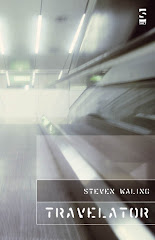On the bus coming back home from Accrington today, I was thinking about what it is I don't like about the work of Damian Hirst. I have nothing against the Young British Artists so-called as such, but I just do not like his with a kind of passion. So what is it I don't like?
It's something to do, I think, with what I perceive to be a lack of heart. His lack of competency at painting, recently revealed in a couple of exhibitions, is neither here nor there. Neither is the fact that he gets his assistants to do a lot of the work; the same has been true of a lot of major painters and sculptors from the medieval age down to the present. Neither is it to do with his subject matter; often to do with death and decay, and the contemporary obsession with surface, with product and the quotidian. There is a tastelessness to his work: that diamond-encrusted skull for instance, that could be right up my punk street, if it wasn't for that lack of heart.
Art - whether it's painting, music or poetry - has to in some sense come from the heart: a lot of us accept that as a kind of truth, but it's very difficult if not impossible to define what we mean by that. This isn't just to do with 'feeling' or it just turns to sentiment and mush. nor is just the intellectual play of ideas, though that is good too. The word 'truth' keeps trying to creep in here; but it's less to do with putting across a, or The Truth. One need not have a message particularly; most of us spend most of our lives in a perpetual state of uncertainty about what's true or isn't true about the world. Out of that uncertainty, however, comes the sense of exploration, of search, that we find in some of the best art produced since the Renaissance.
You don't have to be any kind of believer, either in politics or religion, to be an artist. Hirst's art, however, seems to me to have neither a conviction nor a sense of search about it; just a cynical exploitation of the art market. His works are often essentially 'memento mori's' without any sense of angst. All life ends in death, we're all essentially meat, and nothing means anything. All these views are potentially very profound, leading either to angst or a calm acceptance of the inevitable. In Hirst's world, however, they become truisms, just another thing to sell in the art supermarket. A diamond encrusted skull, a dead shark in a tank, are nothing but product.
Which could be a comment on late capitalism, which knows the price of everything and the value of nothing; except I have the feeling that he doesn't care about that. He's making no critique, nor is he making us think. He's got more in common with the kind of art you find in commercial galleries on the high street: paintings to put in that place on the wall of your living room, that goes with the furniture, not art that disturbs or intrigues. It has more in common with Jack Vettriano than Picasso. Like Vettriano, his art is sentimental and shallow and overpriced.
A statement about my mother who has died
3 weeks ago


